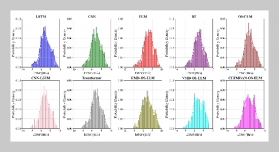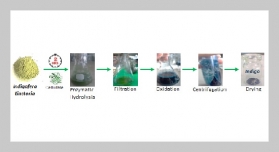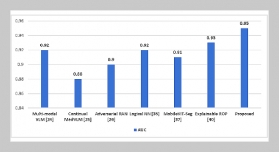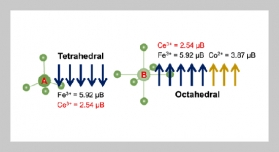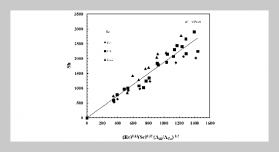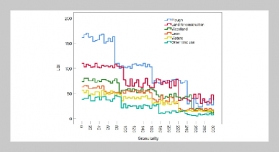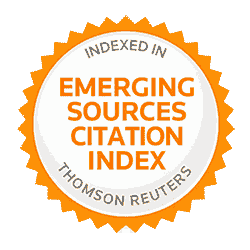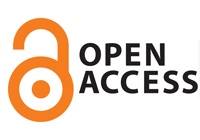- [1] Z. Sun, Q. Guo, J. Yang, H. Fang, G. Guo, J. Zhang, and R. Burke, (2019) “Research Commentary on Recommendations with Side Information: A Survey and Research Directions" Electronic Commerce Research and Applications 37: 100879. DOI: 10.1016/j.elerap.2019.100879.
- [2] X. Wang, D. Wang, C. Xu, X. He, Y. Cao, and T.-S. Chua. “Explainable Reasoning over Knowledge Graphs for Recommendation”. In: Proceedings of the 33rd AAAI Conference on Artificial Intelligence. 2019, 5329–5336. DOI: 10.1609/aaai.v33i01.33015329.
- [3] Z. Sun, J. Yang, J. Zhang, A. Bozzon, L.-K. Huang, andC.Xu.“Recurrent Knowledge Graph Embedding for Effective Recommendation”. In: Proceedings of the 12th ACM Conference on Recommender Systems. 2018, 297–305. DOI: 10.1145/3240323.3240361.
- [4] C. Shi, B. Hu, W. X. Zhao, and S. Y. Philip, (2018) “Heterogeneous Information Network Embedding for Recommendation" IEEE Transactions on Knowledge and Data Engineering 31(2): 357–370. DOI: 10.1109/TKDE.2018.2833443.
- [5] H. Wang, M. Zhao, X. Xie, W. Li, and M. Guo. “Knowledge Graph Convolutional Networks for Recommender Systems”. In: Proceedings of the 28th World Wide Web Conference. 2019, 3307–3313. DOI: 10.1145/3308558.3313417.
- [6] Y. Chen, Y. Yang, Y. Wang, J. Bai, X. Song, and I. King. “Attentive Knowledge-aware graph convolutional networks with collaborative guidance for personalized recommendation”. In: 2022 IEEE 38th International Conference on Data Engineering (ICDE). IEEE. 2022, 299–311. DOI: 10.1109/ICDE53745.2022.00027.
- [7] H. Wang, F. Zhang, M. Zhang, J. Leskovec, M. Zhao, W. Li, and Z. Wang. “Knowledge-aware graph neural networks with label smoothness regularization for recommender systems”. In: Proceedings of the 25th ACMSIGKDD International Conference on Knowledge Discover and Data Mining. 2019, 968–977. DOI: 10.1145/3292500.3330836.
- [8] X. Sha, J. Wang, J. Ding, and X. Xu, (2024) “Hierarchical Knowledge graph embedding with self-attention mechanism for recommendation" Journal of Frontiers of Computer Science and Technology: 1–15. DOI: 10.3778/j.issn.1673-9418.2407019.
- [9] Z. Liu, V. W. Zheng, Z. Zhao, Z. Li, H. Yang, M. Wu, and J. Ying. “Interactive Paths Embedding for Se mantic Proximity Search on Heterogeneous Graphs”. In: Proceedings of the 24th ACM SIGKDD International Conference on Knowledge Discovery and Data Mining. 2018, 1860–1869. DOI: 10.1145/3219819.3219953.
- [10] X. Xin, X. He, Y. Zhang, Y. Zhang, and J. Jose. “Relational Collaborative Filtering: Modeling Multiple Item Relations for Recommendation”. In: Proceedings of the 42nd International ACM SIGIR Conference on Re search and Development in Information Retrieval. 2019, 125–134. DOI: 10.1145/3331184.3331188.
- [11] Y. Cao, X. Wang, X. He, Z. Hu, and T.-S. Chua. “Unifying Knowledge Graph Learning and Recommendation: Towards a Better Understanding of User Preferences”. In: Proceedings of the 28th World Wide Web Conference. 2019, 151–161. DOI: 10.1145/3308558.3313705.
- [12] C. Chen, M. Zhang, W. Ma, Y. Liu, and S. Ma. “Jointly Non-sampling Learning for Knowledge Graph Enhanced Recommendation”. In: Proceedings of the 43rd International ACM SIGIR Conference on Research and Development in Information Retrieval. 2020, 189–198. DOI: 10.1145/3397271.3401040.
- [13] P. Wang, Y. Fan, L. Xia, W. X. Zhao, S. Niu, and J. Huang. “KERL: A Knowledge-Guided Reinforcement Learning Model for Sequential Recommendation”. In: Proceedings of the 43rd International ACM SIGIR Conference on Research and Development in Information Retrieval. 2020, 209–218. DOI: 10.1145/3397271.3401134.
- [14] C. Wang, M. Zhang, W. Ma, Y. Liu, and S. Ma. “Make it a chorus: Knowledge-and time-aware item modeling for sequential recommendation”. In: Proceedings of the 43rd International ACM SIGIR Conference on Research and Development in Information Retrieval. 2020, 109–118. DOI: 10.1145/3397271.3401131.
- [15] Z. Lin and L. Qu, (2023) “Collaborative Knowledge aware Recommendation based on Neighborhood Negative Sampling" Information Systems 115: 102207. DOI: 10.1016/j.is.2023.102207.
- [16] X. Wang, H. Ji, C. Shi, B. Wang, Y. Ye, P. Cui, and P. S. Yu. “Heterogeneous Graph Attention Network”. In: Proceedings of the 28th International Conference on World Wide Web. 2019, 2022–2032. DOI: 10.1145/3308558.3313562.
- [17] Y. Lu, Y. Fang, and C. Shi. “Meta-learning on Heterogeneous Information Networks for Cold-startRecommendation”. In: Proceedings of the 26th ACM SIGKDD International Conference on Knowledge Discovery and Data Mining. 2020, 1563–1573. DOI: 10.1145/3394486. 3403207.
- [18] K. Yuan, G. Liu, J. Wu, and H. Xiong,(2023)“Semantic and Structural View Fusion Modeling for Social Recommendation" IEEE Transactions on Knowledge and Data Engineering 35(11): 11872–11884. DOI: 10.1109/TKDE.2022.3230972.
- [19] X. Wang, T. Huang, D. Wang, Y. Yuan, Z. Liu, X. He, and T.-S. Chua. “Learning Intents Behind Interactions with Knowledge Graph for Recommendation”. In: Proceedings of the Web Conference 2021. 2021, 878–887. DOI: 10.1145/3442381.3450133.
- [20] Y. Li, X. Sun, H. Chen, S. Zhang, Y. Yang, and G. Xu, (2024) “Attention Is Not the Only Choice: Counterfactual Reasoning for Path-based Explainable Recommendation" IEEE Transactions on Knowledge and Data Engineering: DOI: 10.1109/TKDE.2024.3373608.
- [21] J. Jin, J. Qin, Y. Fang, K. Du, W. Zhang, Y. Yu, Z. Zhang, and A. J. Smola. “An Efficient Neighborhood based Interaction Model for Recommendation on Heterogeneous Graph”. In: Proceedings of the 26th ACMSIGKDD International Conference on Knowledge Discovery and Data Mining. 2020, 75–84. DOI: 10.1145/ 3394486.3403050.
- [22] X. Chen, C. Huang, L. Yao, X. Wang, W. Zhang, et al. “Knowledge-guided Deep Reinforcement Learning for Interactive Recommendation”. In: 2020 International Joint Conference on Neural Networks. IEEE. 2020, 1–8. DOI: 10.1109/IJCNN48605.2020.9207010.
- [23] X. Wang, X. He, Y. Cao, M. Liu, and T.-S. Chua. “KGAT: Knowledge Graph Attention Network for Recommendation”. In: Proceedings of the 25th ACM SIGKDD International Conference on Knowledge Discovery and Data Mining. 2019, 950–958. DOI: 10.1145/3292500.3330989.
- [24] Y. Yang, C. Huang, L. Xia, and C. Li. “Knowledge Graph Contrastive Learning for Recommendation”. In: Proceedings of the 45th International ACM SIGIR Conference on Research and Development in Information Retrieval. 2022, 1434–1443. DOI: 10.1145/3477495.3532009.
- [25] W. Zhang, L. Yang, Z. Song, H. P. Zou, K. Xu, L. Fang, and P. S. Yu. “Do We Really Need Graph Convolution During Training? Light Post-Training Graph ODE for Efficient Recommendation”. In: Proceedings of the 33rd ACM International Conference on Information and Knowledge Management. 2024, 3248–3258. DOI: 10.1145/3627673.3679773.
- [26] B. Shuai, Z. Zuo, B. Wang, and G. Wang. “Dag recurrent Neural Networks for Scene Labeling”. In: Proceedings of the IEEE Conference on Computer Vision and Pattern Recognition. 2016, 3620–3629. DOI: 10.1109/CVPR.2016.394.
- [27] X. He, L. Liao, H. Zhang, L. Nie, X. Hu, and T.-S. Chua. “Neural Collaborative Filtering”. In: Proceedings of the 26th International Conference on World Wide Web. 2017, 173–182. DOI: 10.1145/3038912.3052569.
- [28] Y. Lin, Z. Liu, M. Sun, Y. Liu, and X. Zhu. “Learning Entity and Relation Embeddings for Knowledge Graph Completion”. In: Proceedings of the 29th AAAI Conference on Artificial Intelligence. 2015, 2181–2187. DOI: 10.1609/aaai.v29i1.9491.
- [29] J. Chung, C. Gulcehre, K. Cho, and Y. Bengio.“Empirical Evaluation of Gated Recurrent Neural Networks on Sequence Modeling”. In: Neur IPS 2014 Workshop on Deep Learning. 2014. DOI: https://doi.org/10.48550/arXiv.1412.3555.
- [30] B. Hu, C. Shi, W. X. Zhao, and P. S. Yu. “Leveraging Meta-path based Context for Top-N Recommendation with a Neural Co-Attention Model”. In: Proceed ings of the 24th ACM SIGKDD International Conference on Knowledge Discovery and Data Mining. 2018, 1531–1540. DOI: 10.1145/3219819.3219965.
- [31] X. Yu, X. Ren, Y. Sun, Q. Gu, B. Sturt, U. Khandelwal, B. Norick, and J. Han. “Personalized Entity Recom mendation: A Heterogeneous Information Network Approach”. In: Proceedings of the 7th ACM Interna tional Conference on Web Search and Data Mining. 2014, 283–292. DOI: 10.1145/2556195.2556259.
- [32] S. Rendle, C. Freudenthaler, Z. Gantner, and L. Schmidt-Thieme. “BPR: Bayesian Personalized Rank ing from Implicit Feedback”. In: Proceedings of the 25th Conference on Uncertainty in Artificial Intelligence. 2009, 452–461. DOI: 10.5555/1795114.1795167.
- [33] G. Lee, K. Kim, and K. Shin. “Revisiting Light GCN: Unexpected Inflexibility, Inconsistency, and A Remedy Towards Improved Recommendation”. In: Proceedings of the 18th ACM Conference on Recom mender Systems. 2024, 957–962. DOI: 10.1145/3640457.3688176.
- [34] F. Zhang, N. J. Yuan, D. Lian, X. Xie, and W.-Y. Ma. “Collaborative Knowledge Base Embedding for Rec ommender Systems”. In: Proceedings of the 22nd ACM SIGKDD International Conference on Knowledge Discovery and Data Mining. 2016, 353–362. DOI: 10.1145/ 2939672.2939673.
- [35] Y. Jiang, Y. Yang, L. Xia, and C. Huang. “DiffKG: Knowledge Graph Diffusion Model for Recommen dation”. In: Proceedings of the 17th ACM International Conference on Web Search and Data Mining. 2024, 313 321. DOI: 10.1145/3616855.3635850.
- [36] D. P. Kingma and J. Ba, (2014) “Adam: A Method for Stochastic Optimization" arXiv preprint: arXiv:1412.6980. DOI: https://arxiv.org/abs/1412. 6980.
- [37] X. Wang, X. He, M. Wang, F. Feng, and T.-S. Chua. “Neural Graph Collaborative Filtering”. In: Proceedings of the 42nd International ACM SIGIR Conference on Research and Development in Information Retrieval. 2019, 165–174. DOI: 10.1145/3331184.3331267.
- [38] L. Zimmer, M. Lindauer, and F. Hutter, (2021) “Auto Pytorch: Multi-fidelity Metalearning for Efficient and Ro bust Autodl" IEEE Transactions on Pattern Analy sis and Machine Intelligence 43(9): 3079–3090. DOI: 10.1109/TPAMI.2021.3067763.
- [39] T. Zhao, J. Chen, Y. Ru, Q. Lin, Y. Geng, and J. Liu. “Untargeted Adversarial Attack on Knowledge Graph Embeddings”. In: Proceedings of the 47th International ACM SIGIR Conference on Research and Development in Information Retrieval. 2024, 1701–1711. DOI: 10.1145/3626772.3657702.
- [40] Z. Guo, P. Song, C. Feng, K. Yao, C. Dang, and J. Liang, (2024) “Causal Intervention for Knowledge Graph Denoising in Recommender Systems" International Journal of Machine Learning and Cybernetics: 1–17. DOI: 10.1007/s13042-024-02500-0.


